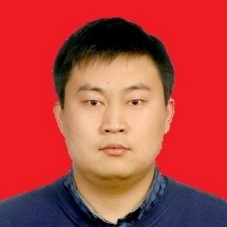Piezoelectric Materials and Piezoelectric Robots
A special issue of Materials (ISSN 1996-1944). This special issue belongs to the section "Smart Materials".
Deadline for manuscript submissions: closed (20 May 2023) | Viewed by 2940
Special Issue Editors
Interests: piezoelectric actuators; ultrasonic transducers; micro-nano manipulations; nanopositioning; vibration control; soft robots
Special Issues, Collections and Topics in MDPI journals
Interests: precision machines and instruments; mechanical properties of materials; surface modification of materials
Special Issue Information
Dear Colleagues,
Piezoelectric materials are widely used in sensors, actuators, transducers, manipulators, and robots. As a typical functional material, piezoelectric materials have the merits of small size, high power density, high displacement resolution, high sensitivity, and more. The research of piezoelectric materials is mainly focused on the development of new materials and their new applications. Furthermore, the applications of piezoelectric materials include piezoelectric robots, piezoelectric actuators, ultrasonic motors, piezoelectric sensors, piezoelectric transducers, nano manipulations, piezoelectric microjets, piezoelectric pumps, and more. The piezoelectric robot is a new concept for the robot using the piezoelectric element as the actuating element. The unique merits of this approach include a large working range, high resolution (nanometer level), large load-carrying ability, and multi-DOF motion. The demand for robots with high performance in cross-scale and multi-DOF motion has been continuously increasing in recent years, which the piezoelectric robot can satisfy well. This Special Issue aims to provide a forum for researchers to generate, exchange, and follow up the ideas, recent trends, and achieved results related to new piezoelectric materials and new applications of piezoelectric materials. Original innovative research works from both academia and industry are welcomed. Topics of interest include, but are not limited to:
Prof. Dr. Yingxiang Liu
Prof. Dr. Hu Huang
Guest Editors
Manuscript Submission Information
Manuscripts should be submitted online at www.mdpi.com by registering and logging in to this website. Once you are registered, click here to go to the submission form. Manuscripts can be submitted until the deadline. All submissions that pass pre-check are peer-reviewed. Accepted papers will be published continuously in the journal (as soon as accepted) and will be listed together on the special issue website. Research articles, review articles as well as short communications are invited. For planned papers, a title and short abstract (about 100 words) can be sent to the Editorial Office for announcement on this website.
Submitted manuscripts should not have been published previously, nor be under consideration for publication elsewhere (except conference proceedings papers). All manuscripts are thoroughly refereed through a single-blind peer-review process. A guide for authors and other relevant information for submission of manuscripts is available on the Instructions for Authors page. Materials is an international peer-reviewed open access semimonthly journal published by MDPI.
Please visit the Instructions for Authors page before submitting a manuscript. The Article Processing Charge (APC) for publication in this open access journal is 2600 CHF (Swiss Francs). Submitted papers should be well formatted and use good English. Authors may use MDPI's English editing service prior to publication or during author revisions.
Keywords
- piezoelectric materials
- piezoelectric robots
- piezoelectric actuators, ultrasonic motors
- piezoelectric sensors
- piezoelectric transducers
- nanomanipulation
- piezoelectric microjets
- piezoelectric pumps
- control of piezoelectric elements







